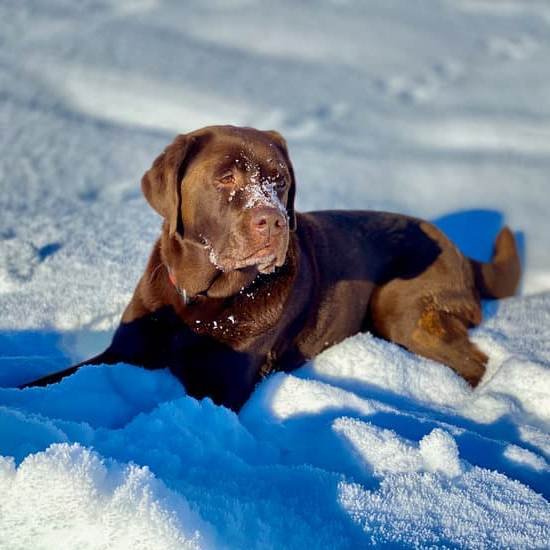Introduction
The Great Dane is an intelligent, playful, and loyal giant dog breed. With their lifespan ranging between 8-10 years, they are one of the tallest and heaviest breeds of dogs in the world. They possess astonishing strength and agility which needs to be complemented by proper training. Training a Great Dane requires a great deal of patience, focus, and consistency. It enables them to understand commands quickly as well as improving their general behavior. Additionally, it can help alleviate any potential aggression issues that could arise due to fear or anxiety. With the right approach, training sessions can also lead to improved mental alertness and physical responsiveness in these majestic creatures.
Understanding Great Dane Dog Behavior
Training a Great Dane can be a challenging experience due to their large size and strength. It is important to understand the breed’s behavior in order to better train your dog, as well as create a harmonious relationship with them.
One of the most important aspects of training a Great Dane is understanding that they are highly intelligent but very patient dogs. This means that you’ll need to employ positive reinforcement methods in order for your pet to learn properly and consistently. While it may require patience and dedication, once successful results begin being seen, you and your pet will enjoy the experience more. During this process, be sure to not mistreat or punish your Dane if they don’t obey commands immediately; they need time to process and understand what is being asked of them.
In addition, because of their intelligence and desire for companionship, providing plenty of physical activities such as walks or playtime can be extremely beneficial throughout the duration of their life with you. With proper coaching on how their behavior should look like, they can learn proper social etiquette while on walks or outings with other people and animals as well.
When introducing new routines such as housebreaking or basic commands, try incorporating treats or verbal encouragement into routine practice sessions so that learning becomes fun for both parties involved. Because Danes are often enthusiastic when it comes to learning, creating a reward system that allows for motivation during excited states can also help facilitate positive behaviors. Professional advice from certified trainers or experts regarding the breed’s behavior can also prove invaluable during moments where frustration begins setting in – these additional resources allow owners benefit from expert opinion knows best practices
Overall, training a Great Dane requires patience, love and dedication from its owners; however if done correctly with constructive methods employed regularly by all members involved in rearing this magnificent breed of dog – many wonderful experiences await!
Basic Commands for Training a Great Dane
When training a Great Dane, provide more specific verbal cues by using the dog’s name when calling them towards a desired action. For example, when you need your dog to sit, say their name along with the command “sit”. This will help your dog associate their name with the command and make it easier for them to understand what is expected of them. It is also important to use positive reinforcement such as treats or praise when they do something right so that they feel encouraged to perform the desired behaviour more often. The more consistent you are in providing rewards and demonstrating patience when teaching new commands, the easier it will be for your Great Dane to learn and obey simple commands.
Utilizing Positive Reinforcement Techniques
Great Dane dog training should focus on positive reinforcement techniques. This means that the primary goal of the trainer is to reward good behavior and ignore bad behavior. Instead of punishing their pet for misbehavior, an owner should focus on rewarding the behaviors that are desired.
To help reinforce this approach, video clips or audio recordings can be used to demonstrate what types of treats and rewards can be used to encourage a Great Dane. These treats should not be used as a bribe but as a reward when they complete a task or display desirable behaviors. This will help create positive associations with the environment and tasks, making training easier and more enjoyable for both parties. Rewards can also include verbal praise, physical affection like petting and playing, or access to beloved items such as toys or favorite sleeping spots.
It’s important to find what works best for your Great Dane; some may be motivated by food while others may respond more readily to physical reinforcement. Whatever rewards you choose, consistent use of these positive reinforcement techniques will promote successful training sessions with your dog!
Troubleshooting Difficult Training Situations
-If there are large distractions, try breaking the training sessions up into smaller chunks that do not exceed 5 to 10 minutes. After each session, reward the dog for its performance.
-It is also beneficial to set-up a designated training space; ensuring minimal distractions by removing items such as toys and furniture from the area. You can even provide treats or toys that the dog is only available during training time.
-For long training sessions, ensure that you are mixing up routines and activities in order to keep your Great Dane engaged and motivated. For example, incorporate some playtime with every few minutes of obedience training. This will help keep their attention more focused on task at hand as well as reinforce positive interactions between owner and pet.
-You can also enlist the help of another person who will basically mirror the same commands and behaviours as you expect from your dog; they should stand far enough away so as not to cause distraction and simply feed your Great Dane verbal encouragement when warranted. The more consistency both parties can provide, the better chance you have of success in your behaviour shaping process for your Great Dane Dog!
Benefits of Consistent Training for Great Dane Dogs
Consistent training for Great Dane Dogs keeps them healthy, happy and well-behaved in both the short-term and long-term. In the short-term, regular training can help a dog learn basic commands to ensure their safety and your peace of mind whenever you need to take them on walks or trips. This also sets the tone for your canine companion’s expectations in life while simultaneously establishing a bond between the two of you.
In the long-term, consistent training will keep your dog healthy and happy by instilling good habits that carry over into their daily activities. Your Great Dane will be better equipped to understand what is expected of them as part of a family or within public spaces – they are less likely to become destructive or disobedient due to unmet expectations. Consistent training also helps minimize dangerous behaviors that may be common in some breeds, such as bolting out doors or jumping on people unexpectedly. Additionally, positive reinforcement during well-structured obedience lessons can help build strong confidence levels in dogs which helps them relax easier when introduced to unfamiliar environments. Ultimately, through proper guidance from an experienced trainer and lots of patience from its owners, any Great Dane can become a great pet!
Tips for a Successful Training Program
If you are looking for resources to help with Great Dane dog training, the following list may be helpful.
Books:
1. Training Your Great Dane: A Positive and Respectful Approach by Moshe Cafritz
2. The Complete Guide To Raising And Training a Great Dane Puppy by Margaret Kimberley
3. Great Danes: An Owner’s Guide To A Happy Healthy Pet by Susan Cope Becker
4. How to Train Your Dog the Good Way: 10 Steps to Successful Dog Training For All Breeds by Zak George
Websites & Online Articles:
1. “Training a Great Dane” – American Kennel Club
2. “Basic Obedience and socialization” – Whole Dog Journal
3. “Major Challenges Facing Trainers of Giant Breed Dogs” – Dr. Ian Dunbar
4. “Crate Training Your Adult Great Dane” – The Canine Chronicle
Conclusion
The Great Dane is an intelligent, energetic dog that can be easily trained. It’s important to have patience, stay consistent and use positive reinforcement techniques when training a Great Dane. Obedience training should focus on mastering basic commands such as sit, stay, and come. Early socialization with people and other dogs is also essential in developing your pup’s manners and good behaviors.
Overall, the Great Dane responds best to a combination of love, consistency and reward-based training methods. Certified trainers specializing in the breed are available in most areas if you require additional assistance or support with your furry friend’s development. If you need help finding a trainer in your area, please contact your local veterinarian or humane society for recommendations.

Welcome to the blog! I am a professional dog trainer and have been working with dogs for many years. In this blog, I will be discussing various topics related to dog training, including tips, tricks, and advice. I hope you find this information helpful and informative. Thanks for reading!





